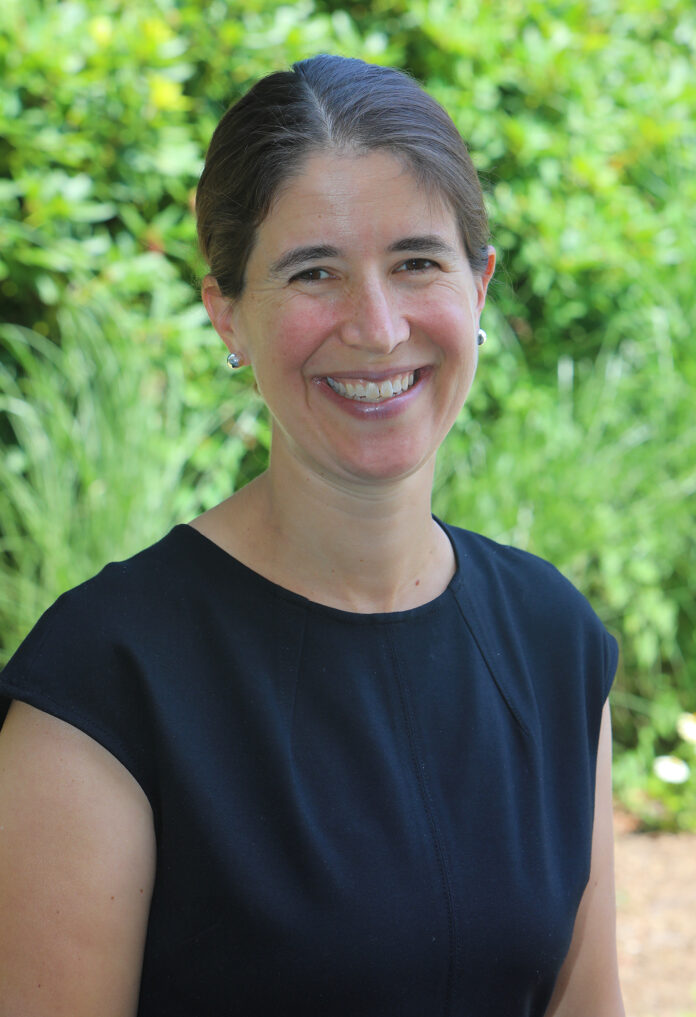In just a few weeks, a new group of Community College of Rhode Island students will participate in Rhode Island Promise, the scholarship program allowing high school graduates to attend the college at no cost for two years.
This will be the program’s third class.
So, should Rhode Island Promise be considered a success? A failure? Something in between? Is the program worth the $8 million set aside for it in the state budget?
Sara Enright, Community College of Rhode Island vice president of student affairs, offers her assessment.
PBN: So, the first cohort of Rhode Island Promise students graduated in May. I believe the stats were: 1,580 students had enrolled two years earlier, and about 285 made it through the two years tuition-free. On the face of it, that graduation rate doesn’t appear to be very good. Would you agree, or is there more to the story?
ENRIGHT: There is absolutely more to the story. Measuring CCRI’s performance against national benchmarks is essential. In the first cohort, 1,584 students started in September 2017, and we expect at least 285 to graduate by the end of [the summer]. That 18% two-year graduation rate means that our very first cohort tripled our college’s historical two-year graduation rate of 6%.
The national average two-year graduation rate for public community colleges is 13%. So, in one year’s time, we have gone from a graduation rate that was more than 50% below the national average to one that is nearly 40% above that national average. That type of performance improvement in one year is virtually unprecedented in the community college landscape.
Also, the two-year graduation rate doesn’t tell the whole story. We expect more than a third of students from the first cohort will graduate in three years and we know that many other students will transfer to four-year institutions before graduating. These students are benefitting from the state’s investment.
PBN: What do you say to people who question whether the Rhode Island Promise program is worth the millions the state is spending on it each year?
ENRIGHT: I would first say thank you for investing in our students, and I would then say yes, unquestionably, it is worth the state’s investment. The state is investing incrementally more in higher education to get dramatically higher returns. We have more high school graduates pursuing higher education than ever before and more of them graduating. No higher education public policy in recent history has moved the needle on college-going rates or graduation rates as much as the Rhode Island Promise.
This program is also leveraging significant federal funding in the form of Pell grants. For every additional dollar that the state has invested, the federal government has invested nearly $1.50 to fund students in the Promise program. To be honest, I worry much more about the cost of not investing in this program than I do about the incremental cost. We need it. At least 70% of jobs will require a college credential by 2025 and right now, only 47% of working-age Rhode Islanders have one. If we are going to continue to strengthen our economic competitiveness, we must invest in getting more Rhode Islanders the education they need for the jobs of today and tomorrow.
PBN: What are the key metrics to measure success of Rhode Island Promise and how do they compare to similar programs in other states?
ENRIGHT: The key metrics to measure success are access, completion and equity. With access, we have seen a 113% increase in enrollment of first-time, full-time, straight-from-high-school Rhode Islanders in the first two years of this program. That type of enrollment growth exceeds most, if not all, other statewide Promise programs. With completion, we have seen our two-year graduation rate triple. Again, that type of change meets or exceeds all other statewide Promise programs. Lastly, with equity, we have seen the two-year graduation rate for students of color grow by 5X. The Rhode Island Promise has dramatically improved access, completion and equity within our state’s higher education landscape.
PBN: If you could change anything about the program as it exists now to make it more effective, what would it be?
ENRIGHT: I think the biggest change we would like to see is making the program permanent. The Rhode Island Promise is clearly working, and I would like to see our state commit to it for the long term. Right now, the legislation is a four-year pilot program ending with the high school graduating class of 2020. I think to build a statewide college-going culture, we need to be able to show that an affordable path to college is there and will be there in the future. We need to show today’s third, sixth, and ninth graders that college is possible for them and that Rhode Island is there to make it a reality for them.
PBN: What steps is CCRI taking to ensure the program continues to grow in the future?
ENRIGHT: As a college, we are doing more proactive outreach than we have ever done before. We are hosting open-enrollment days, utilizing social media and texting, and working hard trying to meet students where they are. We are also working in close partnership with high schools and college-access organizations [such as] the College Crusade to make sure everyone is aware of the opportunity that the Rhode Island Promise provides.
William Hamilton is PBN staff writer and special projects editor. You can follow him on Twitter @waham or email him at hamilton@pbn.com.













